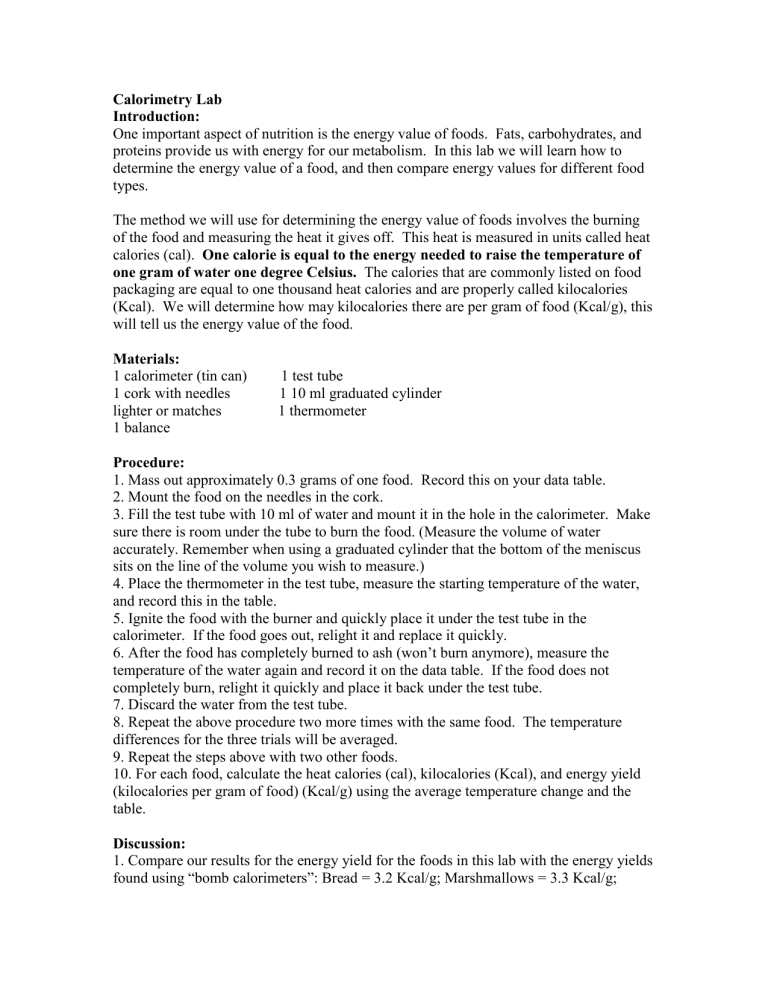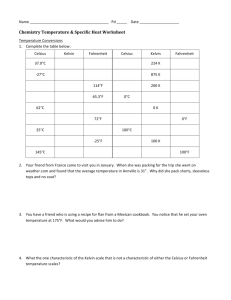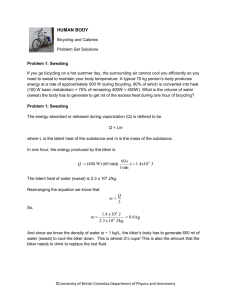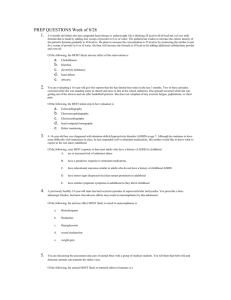Calorimetry Lab

Calorimetry Lab
Introduction:
One important aspect of nutrition is the energy value of foods. Fats, carbohydrates, and proteins provide us with energy for our metabolism. In this lab we will learn how to determine the energy value of a food, and then compare energy values for different food types.
The method we will use for determining the energy value of foods involves the burning of the food and measuring the heat it gives off. This heat is measured in units called heat calories (cal). One calorie is equal to the energy needed to raise the temperature of one gram of water one degree Celsius.
The calories that are commonly listed on food packaging are equal to one thousand heat calories and are properly called kilocalories
(Kcal). We will determine how may kilocalories there are per gram of food (Kcal/g), this will tell us the energy value of the food.
Materials:
1 calorimeter (tin can) 1 test tube
1 cork with needles 1 10 ml graduated cylinder lighter or matches 1 thermometer
1 balance
Procedure:
1. Mass out approximately 0.3 grams of one food. Record this on your data table.
2. Mount the food on the needles in the cork.
3. Fill the test tube with 10 ml of water and mount it in the hole in the calorimeter. Make sure there is room under the tube to burn the food. (Measure the volume of water accurately. Remember when using a graduated cylinder that the bottom of the meniscus sits on the line of the volume you wish to measure.)
4. Place the thermometer in the test tube, measure the starting temperature of the water, and record this in the table.
5. Ignite the food with the burner and quickly place it under the test tube in the calorimeter. If the food goes out, relight it and replace it quickly.
6. After the food has completely burned to ash (won’t burn anymore), measure the temperature of the water again and record it on the data table. If the food does not completely burn, relight it quickly and place it back under the test tube.
7. Discard the water from the test tube.
8. Repeat the above procedure two more times with the same food. The temperature differences for the three trials will be averaged.
9. Repeat the steps above with two other foods.
10. For each food, calculate the heat calories (cal), kilocalories (Kcal), and energy yield
(kilocalories per gram of food) (Kcal/g) using the average temperature change and the table.
Discussion:
1. Compare our results for the energy yield for the foods in this lab with the energy yields found using “bomb calorimeters”: Bread = 3.2 Kcal/g; Marshmallows = 3.3 Kcal/g;
Peanuts = 5.9 Kcal/g; Cheese Puffs = 6.1 Kcal/g. Why is there such a dramatic difference between the energy yields found in this lab and those from bomb calorimeters?
2. Describe specific ways you could make a more efficient calorimeter than the one we used in this lab.
3. Compare the energy yield for the different foods you burned. Why is the energy yield so much higher for peanuts and cheese puffs than it is for bread and marshmallows?
4. If a person is trying to lose weight, which foods (protein, fats, carbohydrates) should they decrease in their diet? Explain why.
5. In this lab we used a calorimeter to burn (oxidize) the food, but living things don’t use fire to oxidize food. What process do living things use to get the energy out of food?
Where does this process occur?
Equations:
•
Heat calories = Mass of H
2
O (g) x Change in Temperature of the water ( o
C)
[cal/(g)( o
C)]
•
Kilocalories = Heat calories (cal) / 1000 (cal/Kcal)
•
Energy yield = Kilocalories (Kcal) / Grams of food (g)





